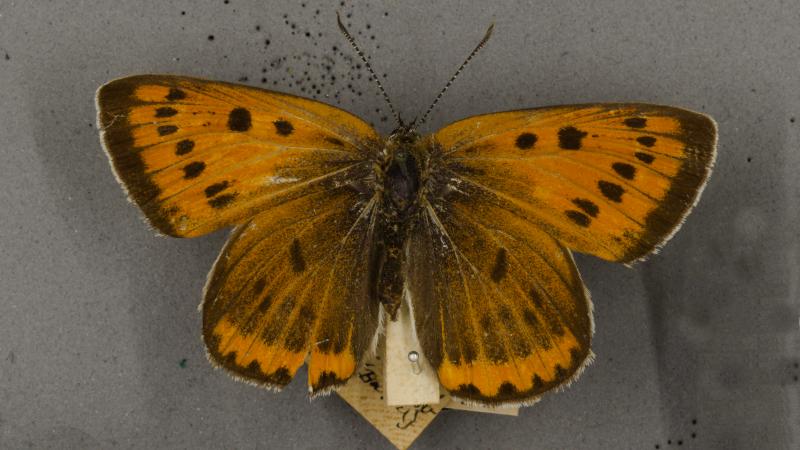
Pictured: large copper, Lycaena dispar
200-year trend in Cambridgeshire: Decline to extinction.
Modern records
This species used to be found throughout the wet fenlands of south east England. However, it is estimated that in the UK 99% of this habitat was drained to make space for agriculture and as a result, the large copper went extinct around 150 years ago. One of the last locations the British subspecies was found was Whittlesea Mere in Cambridgeshire, which was drained in 1851.
Official reintroductions have been attempted from different subspecies on the continent but have so far failed. Large scale restoration projects in Cambridgeshire, such as the BCN Wildlife Trust’s Great Fen and National Trust’s Wicken Vision project, are working to bring wetland habitat back. However, these sites need to increase in size and support more of the large copper’s foodplant, great water dock, to give this wetland specialist butterfly a chance of surviving here again in the future. That being said, occasional sightings of this species do still pop up in the UK, most likely from unofficial releases without the backing of an authorised reintroduction programme.
National records map
Large copper national records map:https://species.nbnatlas.org/species/NHMSYS0000516450
Scarce copper
Scarce copper, Lycaena virgaureae
200-year trend in Cambridgeshire: Little change.
Modern records
Historically, there has been quite a lot of confusion separating this species and from the large copper, Lycaena dispar. As such the existence of the scarce copper, Lycaena virgaureae, in Britain, let alone Cambridgeshire, is in doubt. This fits with Jenyns’ notes where he records that the species is ‘said to inhabit’ marshes in Ely, indicating that this statement may not have been verified.
National records map
Scarce copper national records map: Not available.





